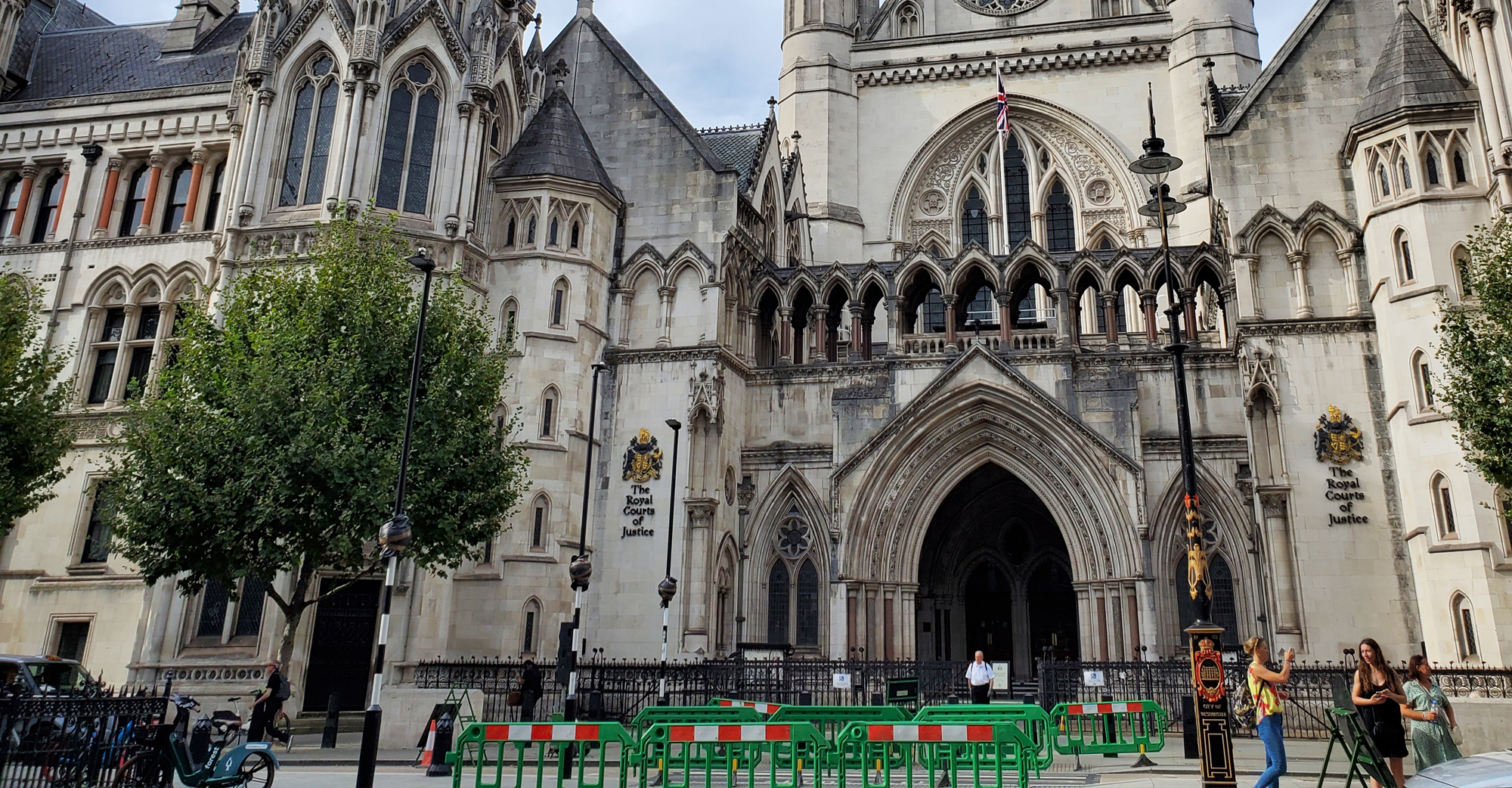Curated by Ed Boitano
Name the world’s longest beach. What is the birthplace of surfing? These questions and more are in our 37th installment of Traveling Boy’s Global Beach Trivia game.
Global Beach Trivia
Start
Congratulations!
You have completed Global Beach Trivia.

You scored %%SCORE%% out of a possible 5 points.
Your performance was: %%RATING%%
Your answers are highlighted below.
Question 1 |

Name the world’s longest beach.
A | Cox’s Bazar, Bangladesh |
B | Ninety Mile Beach, Australia |
C | Padre Island, Texas |
D | Praia do Cassino Beach, Brazil |
E | Virginia Beach, Virginia |
Question 1 :
Answer: D. Praia do Cassino Beach, Brazil
1. At over 150 miles in length, Praia do Cassino Beach is the longest beach in the entire world. Brazil’s beaches are known for their white sand, warm temperatures and welcoming locals. Any trip here is going to be hot, hot, hot! All sorts of water activities can be enjoyed here but surfing is the most popular pastime.

2. Cox’s Bazar, Bangladesh
This beach has the distinction of being the world’s longest ‘natural sand’ beach, stretching across 150 miles. It’s an interesting place which is one of the most popular tourist attractions in Bangladesh but remains relatively little known amongst travelers in general since Bangladesh is not considered a top destination for the average family. The people who do go here will find that there are three separate spots to enjoy: Laboni Beach which is the main beach close to town, Humchari which is loved for its waterfalls and Inani Beach which is favored for suntanning. You may hear people here calling the beach Panowa; the term means ‘little flower’ and is the nickname that locals know the place by.
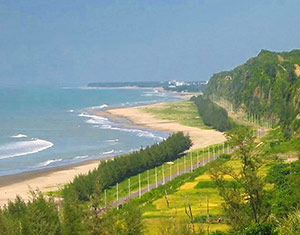
3. Padre Island, Texas
This beach is about 130 miles long and is known for being one of the longest drivable beaches in the world. Located in Texas, the water here is from the Gulf of Mexico so it’s a place where the water is warm enough for swimming nearly all year round. There are two distinct sides to this beach; the north side is a party spot for spring break kids and the south side is a National Seashore where visitors can see the dunes and tides preserved in their original state. Make sure to look for the sea turtles which are a favorite tourist attraction here.
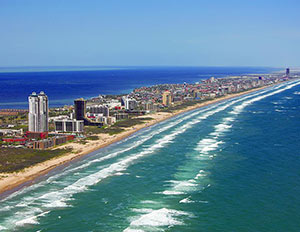
4. Ninety Mile Beach, Australia
At just over ninety miles, this is a beautiful Australian beach dotted with charming coastal towns. Unfortunately, there aren’t terrific swimming or surfing conditions here most of the time so it’s not necessarily a favourite beach for watersports. Nevertheless, people who are seeking to get great beach photographs will find miles and miles of picture perfect spots here.
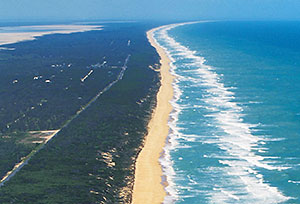
5. Ninety Mile Beach, New Zealand
Not to be outdone by Australia, this neighboring country also has a Ninety Mile Beach. However, this one is slightly shorter at about 88 miles in length. It’s a popular tourist destination because the sand dunes here look a lot like desert land which provides an interesting contrast to the ocean.
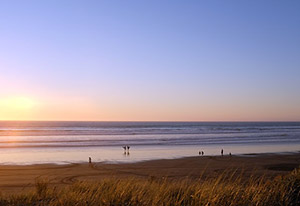
1. At over 150 miles in length, Praia do Cassino Beach is the longest beach in the entire world. Brazil’s beaches are known for their white sand, warm temperatures and welcoming locals. Any trip here is going to be hot, hot, hot! All sorts of water activities can be enjoyed here but surfing is the most popular pastime.

2. Cox’s Bazar, Bangladesh
This beach has the distinction of being the world’s longest ‘natural sand’ beach, stretching across 150 miles. It’s an interesting place which is one of the most popular tourist attractions in Bangladesh but remains relatively little known amongst travelers in general since Bangladesh is not considered a top destination for the average family. The people who do go here will find that there are three separate spots to enjoy: Laboni Beach which is the main beach close to town, Humchari which is loved for its waterfalls and Inani Beach which is favored for suntanning. You may hear people here calling the beach Panowa; the term means ‘little flower’ and is the nickname that locals know the place by.

3. Padre Island, Texas
This beach is about 130 miles long and is known for being one of the longest drivable beaches in the world. Located in Texas, the water here is from the Gulf of Mexico so it’s a place where the water is warm enough for swimming nearly all year round. There are two distinct sides to this beach; the north side is a party spot for spring break kids and the south side is a National Seashore where visitors can see the dunes and tides preserved in their original state. Make sure to look for the sea turtles which are a favorite tourist attraction here.

4. Ninety Mile Beach, Australia
At just over ninety miles, this is a beautiful Australian beach dotted with charming coastal towns. Unfortunately, there aren’t terrific swimming or surfing conditions here most of the time so it’s not necessarily a favourite beach for watersports. Nevertheless, people who are seeking to get great beach photographs will find miles and miles of picture perfect spots here.

5. Ninety Mile Beach, New Zealand
Not to be outdone by Australia, this neighboring country also has a Ninety Mile Beach. However, this one is slightly shorter at about 88 miles in length. It’s a popular tourist destination because the sand dunes here look a lot like desert land which provides an interesting contrast to the ocean.

Question 2 |
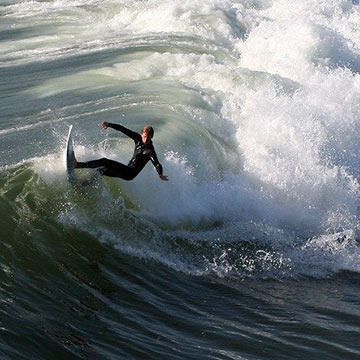
What is the birthplace of surfing?
A | Australia |
B | Hawaii |
C | Peru |
D | Samoa |
E | Tahiti |
Question 2 :
Answer: C. Peru
Before the Incas or the Spanish, the Moche and Chimu cultures inhabited the north of Peru. Their communities along the coast depended greatly on fishing as a means for food. Each morning the fishermen would fish on their boats made of bounded reeds. To get back to shore, the fisherman would surf the waves with their fish-filled nets in hand. Peru’s north coast, where there is evidence of the Moche and Chimu’s presence, is also home to some of the world’s best waves, especially at Chicama. According to Moche and Chimu pottery art, this method of riding waves after fishing has been practiced for at least the last 2000 years. There is even evidence in the pottery art that the waves were ridden for fun and not just out of necessity.
The western world considered the Tahitians the first to surf, using large wooden boards to ride waves as we do today. This history has for the most part gone unchallenged until it was discovered that a civilization has been riding waves for at least 2000 years off the north coast of Peru. One of the most famous written accounts of surfing is the diary of European captain James Cook who witnessed Tahitian surfers in 1778. He and his crew were shocked to see men riding the waves on planks on wood. James Cook’s diary provided readers with lots of valuable information about sailing in the Pacific. Still, the Europeans had never seen anything like surfing. They were even worried about the surfers because they expected the waves to throw them on jagged rocks near the shore. Of course, those Tahitian surfers came from a culture where everyone knew how to hold their own in the water. The men jumped off their boards before reaching the rocks, and even smiled while doing it. For them, it was just another day of sunshine and surf.
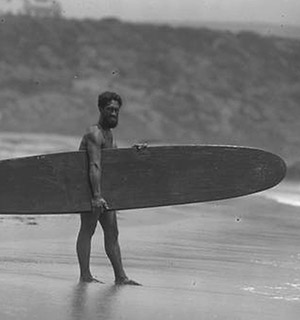
The Polynesians colonized the uninhabited Hawaiian Islands and brought surfing along with them. When European settlers first came to Hawaii, locals were steered away from surfing by Protestant Christian missionaries along with other sacred Hawaiian traditions. Sadly, plantation owners and missionaries introduced the Hawaiian people to canned meat which resulted in obesity, in which there was none before. Still, surfing was such an essential part of Hawaiian culture that people never stopped doing it entirely. Around the end of the 19th century, tourism began to develop, and surfing started to make a huge comeback. People from all over the world started to notice how awesome surfing is, and this was fantastic for Hawaiian tourism. One of the most prominent early players in modern surfing was Duke Kahanamoku. Born in 1890, “The Duke” was one of the best surfers of his time and also an accomplished Olympic swimmer. Once Duke’s fame as an athlete reached a certain point, he decided to go on a world tour to showcase his skills and spread the love of surfing. From California to Australia, he traveled, surfed, and caught the eyes of thousands of eager spectators. He single-handedly popularized the Hawaiian surf tradition. While we can’t say that The Duke invented surfing, but surfing was a massive part of his legacy, and his influence played a pivotal role in the history of surfing. Thanks to his enthusiasm and athleticism, the sport gained more attention than ever before. Today, Hawaii has established itself as the de-facto surfing capital of world.
Before the Incas or the Spanish, the Moche and Chimu cultures inhabited the north of Peru. Their communities along the coast depended greatly on fishing as a means for food. Each morning the fishermen would fish on their boats made of bounded reeds. To get back to shore, the fisherman would surf the waves with their fish-filled nets in hand. Peru’s north coast, where there is evidence of the Moche and Chimu’s presence, is also home to some of the world’s best waves, especially at Chicama. According to Moche and Chimu pottery art, this method of riding waves after fishing has been practiced for at least the last 2000 years. There is even evidence in the pottery art that the waves were ridden for fun and not just out of necessity.
The western world considered the Tahitians the first to surf, using large wooden boards to ride waves as we do today. This history has for the most part gone unchallenged until it was discovered that a civilization has been riding waves for at least 2000 years off the north coast of Peru. One of the most famous written accounts of surfing is the diary of European captain James Cook who witnessed Tahitian surfers in 1778. He and his crew were shocked to see men riding the waves on planks on wood. James Cook’s diary provided readers with lots of valuable information about sailing in the Pacific. Still, the Europeans had never seen anything like surfing. They were even worried about the surfers because they expected the waves to throw them on jagged rocks near the shore. Of course, those Tahitian surfers came from a culture where everyone knew how to hold their own in the water. The men jumped off their boards before reaching the rocks, and even smiled while doing it. For them, it was just another day of sunshine and surf.

The Polynesians colonized the uninhabited Hawaiian Islands and brought surfing along with them. When European settlers first came to Hawaii, locals were steered away from surfing by Protestant Christian missionaries along with other sacred Hawaiian traditions. Sadly, plantation owners and missionaries introduced the Hawaiian people to canned meat which resulted in obesity, in which there was none before. Still, surfing was such an essential part of Hawaiian culture that people never stopped doing it entirely. Around the end of the 19th century, tourism began to develop, and surfing started to make a huge comeback. People from all over the world started to notice how awesome surfing is, and this was fantastic for Hawaiian tourism. One of the most prominent early players in modern surfing was Duke Kahanamoku. Born in 1890, “The Duke” was one of the best surfers of his time and also an accomplished Olympic swimmer. Once Duke’s fame as an athlete reached a certain point, he decided to go on a world tour to showcase his skills and spread the love of surfing. From California to Australia, he traveled, surfed, and caught the eyes of thousands of eager spectators. He single-handedly popularized the Hawaiian surf tradition. While we can’t say that The Duke invented surfing, but surfing was a massive part of his legacy, and his influence played a pivotal role in the history of surfing. Thanks to his enthusiasm and athleticism, the sport gained more attention than ever before. Today, Hawaii has established itself as the de-facto surfing capital of world.
Question 3 |
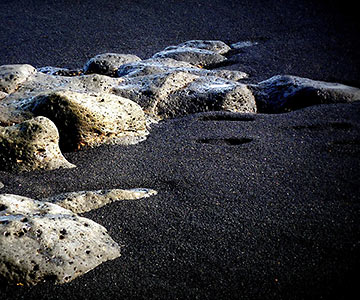
Pink sand beaches’ hue comes from foraminifera, a microscopic organism that actually has a reddish-pink shell, while the sand is a mix of coral, shells, and calcium carbonate. BUT, name the beach where the sand is black, not pink?
A | Elafonisi Beach – Crete, Greece |
B | Horseshoe Bay – Bermuda |
C | Crane Beach – Barbados |
D | Spiaggia Rosa – Northern Sardinia, Italy |
E | Playa de Ses Illetes – Formentera, Spain |
F | Thunder Cove Beach – Prince Edward Island, Canada |
G | Waimea Beach, Kauai, Hawaii |
Question 3 :
Answer: G. Waimea Beach, Kauai, Hawaii
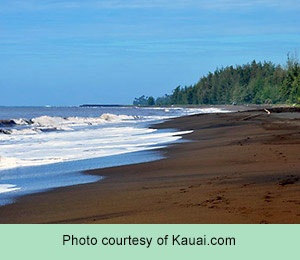
The rare black sand Waimea Beach is located on Kauai’s relatively undeveloped western shore. This Kauai gem does not present conditions ideal for surfing or swimming, but as the island’s only black sand beach, it will absolutely enchant you. Usually black sand beaches are found near volcanoes, and these magical glossy fragments are made up of lava when it touches the ocean waters.
Elafonisi Beach – Crete, Greece: Elafonisi has the amenities of a popular vacation beach (parking lot, nearby bathrooms) but the feel of a remote oasis, thanks to its location removed from major cities. After swimming in the shallow waters, walk across the sandbar to snap some photos of wildflowers.
Horseshoe Bay – Bermuda: Horseshoe Bay is situated on Bermuda’s south coast. It’s tucked between astounding natural limestone cliffs and glistening pink sand that skims the Atlantic Ocean, which is filled with a plethora of coral reefs, a variety of fish, and other marine life. The bay is a fantastic location for snorkeling, volleyball, and kickball. The bay’s long trails are also awesome for jogging or hiking.
Crane Beach – Barbados: Located on the rugged east coast of Barbados, the pink shoreline of Crane Beach is flanked by lush vegetation and turquoise waters. The beach is known for its boogie board–ready waves, and luxe hotels where you can dry off after pulling yourself out of your beach chair.
Spiaggia Rosa – Northern Sardinia, Italy: As gorgeous as its pink sand beach might be, Italy’s Spiaggia Rosa is off-limits to the public. The beach can be viewed via boat or from a nearby cliff that overlooks it, but no one is allowed onto the beach itself. This is due to preserving the beach’s vibrant pink hues, which believe it or not, used to be brighter before visitors began taking jars of it with them.
Playa de Ses Illetes – Formentera, Spain: Formentera is a less-crowded alternative to nearby Ibiza, and Playa de Ses Illetes is its most fashionable beach. For a full day, share some rosy sand with yacht-owning vacationers, then enjoy a plate of fish at one of the island's glitzy restaurants.
Thunder Cove Beach – Prince Edward Island, Canada: If you want to see red sand, one hidden gem is Thunder Cove Beach. The beach is only a short drive from the famous Cavendish Beach which attracts Anne of Green Gables fans and is an excellent spot to escape the crowds.

The rare black sand Waimea Beach is located on Kauai’s relatively undeveloped western shore. This Kauai gem does not present conditions ideal for surfing or swimming, but as the island’s only black sand beach, it will absolutely enchant you. Usually black sand beaches are found near volcanoes, and these magical glossy fragments are made up of lava when it touches the ocean waters.
Pink Sand Beaches
Elafonisi Beach – Crete, Greece: Elafonisi has the amenities of a popular vacation beach (parking lot, nearby bathrooms) but the feel of a remote oasis, thanks to its location removed from major cities. After swimming in the shallow waters, walk across the sandbar to snap some photos of wildflowers.
Horseshoe Bay – Bermuda: Horseshoe Bay is situated on Bermuda’s south coast. It’s tucked between astounding natural limestone cliffs and glistening pink sand that skims the Atlantic Ocean, which is filled with a plethora of coral reefs, a variety of fish, and other marine life. The bay is a fantastic location for snorkeling, volleyball, and kickball. The bay’s long trails are also awesome for jogging or hiking.
Crane Beach – Barbados: Located on the rugged east coast of Barbados, the pink shoreline of Crane Beach is flanked by lush vegetation and turquoise waters. The beach is known for its boogie board–ready waves, and luxe hotels where you can dry off after pulling yourself out of your beach chair.
Spiaggia Rosa – Northern Sardinia, Italy: As gorgeous as its pink sand beach might be, Italy’s Spiaggia Rosa is off-limits to the public. The beach can be viewed via boat or from a nearby cliff that overlooks it, but no one is allowed onto the beach itself. This is due to preserving the beach’s vibrant pink hues, which believe it or not, used to be brighter before visitors began taking jars of it with them.
Playa de Ses Illetes – Formentera, Spain: Formentera is a less-crowded alternative to nearby Ibiza, and Playa de Ses Illetes is its most fashionable beach. For a full day, share some rosy sand with yacht-owning vacationers, then enjoy a plate of fish at one of the island's glitzy restaurants.
Thunder Cove Beach – Prince Edward Island, Canada: If you want to see red sand, one hidden gem is Thunder Cove Beach. The beach is only a short drive from the famous Cavendish Beach which attracts Anne of Green Gables fans and is an excellent spot to escape the crowds.
Question 4 |
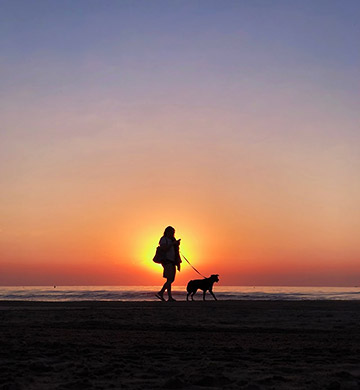
Name the author of this beach poem: I Started Early – Took my Dog – (656)
A | Emily Brontë |
B | Emily Dickinson |
C | Mary Shelley |
D | Patti Smith |
E | Walt Whitman |
Question 4 :
Answer: B. Emily Dickinson
The influential American poet Emily Dickinson wrote "I started Early – Took my Dog –" sometime around 1862. In the poem, a young woman walks to the shore with her dog and looks at the sea. The boats and mermaids seem to call out to the speaker, while the water, treated as a male figure in the poem, begins to creep up the speaker's body. She initially seems excited by this, but as the tide turns and the sea makes to consume the speaker, she abruptly turns away and rushes back to town. According to many readers, these events suggest that the speaker experiences a sexual awakening yet struggles to embrace her own sexual desires. The poem can also be read as being more generally about the allure of adventure, escape, and temptation, and about the simultaneous thrill and fear of embracing the new and unknown. The poem features common meter, as is the case with much of Dickinson's writing. Dickinson left her work untitled, and this poem's title is taken from its first line.
The influential American poet Emily Dickinson wrote "I started Early – Took my Dog –" sometime around 1862. In the poem, a young woman walks to the shore with her dog and looks at the sea. The boats and mermaids seem to call out to the speaker, while the water, treated as a male figure in the poem, begins to creep up the speaker's body. She initially seems excited by this, but as the tide turns and the sea makes to consume the speaker, she abruptly turns away and rushes back to town. According to many readers, these events suggest that the speaker experiences a sexual awakening yet struggles to embrace her own sexual desires. The poem can also be read as being more generally about the allure of adventure, escape, and temptation, and about the simultaneous thrill and fear of embracing the new and unknown. The poem features common meter, as is the case with much of Dickinson's writing. Dickinson left her work untitled, and this poem's title is taken from its first line.
Question 5 |
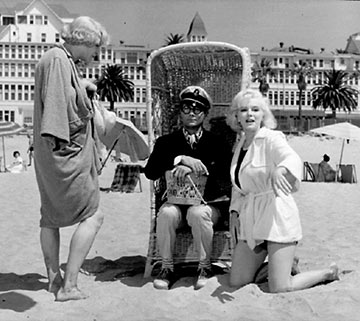
Name the beach location where director Billy Wilder photographed 1959’s “Some Like It Hot.”
A | Coronado Beach, California |
B | Miami Beach, Florida |
C | Santa Monica Beach, California |
D | St. Petersburg, Florida |
E | Waikiki Beach, Oahu, Hawaii |
Question 5 :
Answer: A. Coronado Beach, California
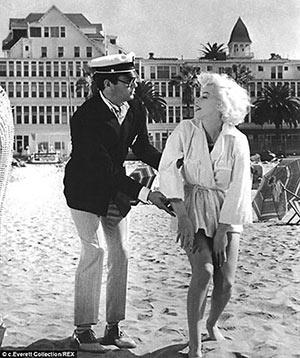
Regularly cropping up near the top of Best Comedy of All Time lists (and boasting the best last line ever), the exteriors for Billy Wilder’s classic were filmed in a mere seven days at Coronado Beach near San Diego, standing in for 1920s 'Florida.'
The ‘Miami’ hotel, where ‘Daphne’ and ‘Josephine’ (Jack Lemmon and Tony Curtis) hide out with Sugar Kane (Marilyn Monroe) and the girl band, is the Hotel Del Coronado, This 700-room Victorian fantasy, built in 1888, has long been frequented by the rich and famous, including no less than eight US presidents, stage actress Sarah Bernhardt, Charlie Chaplin, and – according to legend – it’s where king-to-be Edward met Mrs. Wallis Simpson.

Regularly cropping up near the top of Best Comedy of All Time lists (and boasting the best last line ever), the exteriors for Billy Wilder’s classic were filmed in a mere seven days at Coronado Beach near San Diego, standing in for 1920s 'Florida.'
The ‘Miami’ hotel, where ‘Daphne’ and ‘Josephine’ (Jack Lemmon and Tony Curtis) hide out with Sugar Kane (Marilyn Monroe) and the girl band, is the Hotel Del Coronado, This 700-room Victorian fantasy, built in 1888, has long been frequented by the rich and famous, including no less than eight US presidents, stage actress Sarah Bernhardt, Charlie Chaplin, and – according to legend – it’s where king-to-be Edward met Mrs. Wallis Simpson.
Once you are finished, click the button below. Any items you have not completed will be marked incorrect.
Get Results
There are 5 questions to complete.
You have completed
questions
question
Your score is
Correct
Wrong
Partial-Credit
You have not finished your quiz. If you leave this page, your progress will be lost.
Correct Answer
You Selected
Not Attempted
Final Score on Quiz
Attempted Questions Correct
Attempted Questions Wrong
Questions Not Attempted
Total Questions on Quiz
Question Details
Results
Date
Score
Hint
Time allowed
minutes
seconds
Time used
Answer Choice(s) Selected
Question Text
All done
Deplorable! You need to travel more! This is pathetic!
Deplorable! You need to travel more! This is pathetic!
Embarrassing! Keep trying! We know you're better than that. Play the game again.
Not that bad! But not good either. Play the game again.
Pretty good ... but not perfect.
Perfect! Are you brilliant traveler or what?
